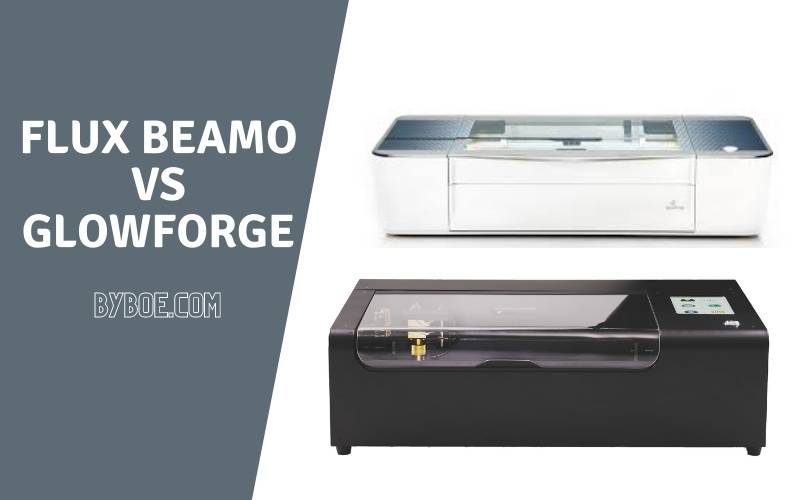The Flux Beamo Vs Glowforge are 3D printers that use lasers to create objects from digital designs. They are both popular printers, but they have some key differences. The Glowforge is a bit more expensive, but it has a larger build area and can print on a broader range of materials. The Flux Beamo is less costly, but it has a smaller build area and can only print in a limited number of materials. Keep reading this article, Byboe will let you know which should you choose?
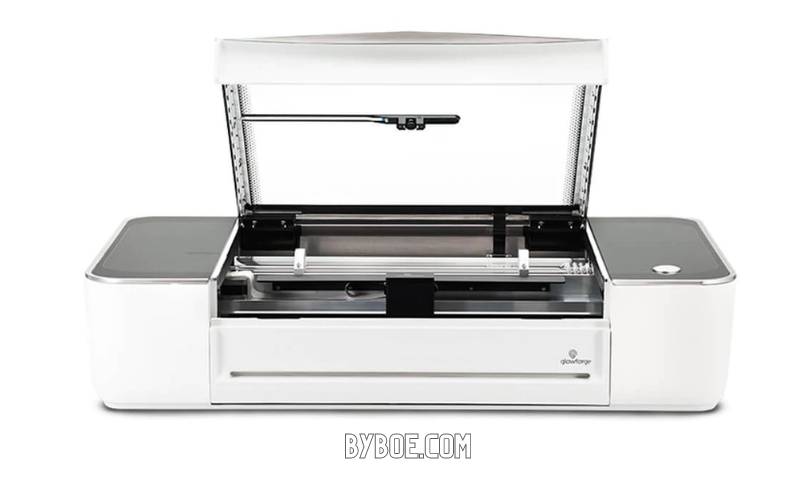
Table of Contents
What is Glowforge?
Glowforge machine is a 3D printer laser engraver that creates beautiful and unique objects with just a button push. A Glowforge makes it easy to cut any material, including wood, paper, and fabric. It can also engrave the glass with aluminum, coated metal, copper, certain phones, tablets, titan, laptops, and many other lasers.
Glowforge can creatively make many things using various different materials, including wood, fabric, felt, and leather. Glowforge is unique from other 3D printers. Glowforge uses subtractive manufacturing, while traditional 3D printer uses an additive.
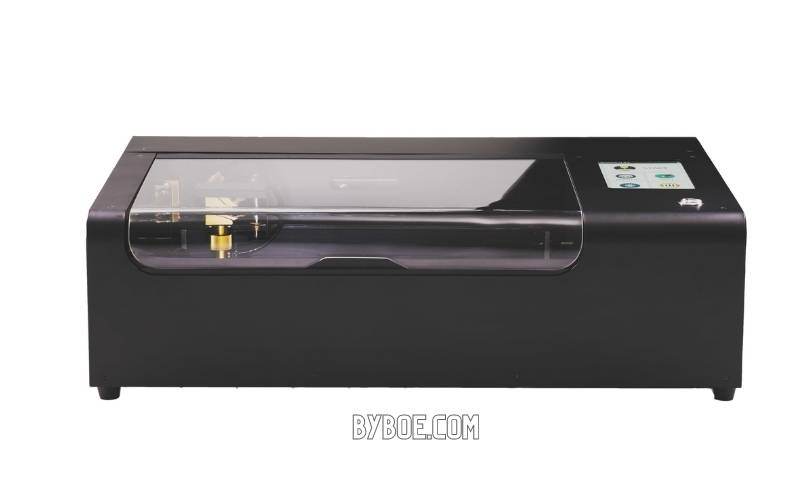
What is Beamo?
Beamo is the perfect tool for anyone who 3D prints. Beam makes it possible to cut and create virtually any surface or platform you can imagine. All this is at a fraction of another laser power with carbon dioxide cost. 3D Printing experts often say that Beamo is full of life if there is enough variety.
Beamon’s air assist is a minimal amount at 615 x 445 mm. This makes it feel comfortable and easy to use.
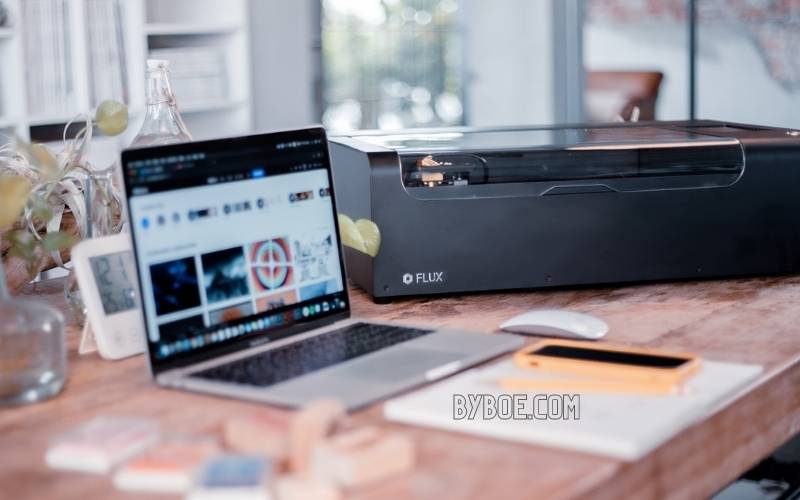
Beamo Flux Vs Glowforge Comparison
Both a Glowforge (by Glowforge) and a Flux Beambox (both by Flux) make a lot of comparisons as I move work between the machines. These cutters can be cut or engraved on a wide range of materials. Both Flux Beamo and Glowforge are my favorites.
Both Flux Beamo Vs. Glowforge can do excellent laser cutting and engraving. The Glowforge can do some things that are easier than the Flux machines. To be fair, the Glowforge was only in beta for two years before the backers could receive their devices.
I was one of those early backers, which was over three years ago. Glowforge is a very user-friendly and highly polished machine.
Flux’s Beam Studio is more traditional and has a web-based interface, but the Glowforge UI is more straightforward. Glowforge makes some tasks more accessible, like scoring.
The engraving feature offers more options, including either a line or dot pattern. I haven’t downloaded the latest beta version of Beam Studio yet, but it appears there may be some dithering possibilities.
All three machines, the Flux Beamo Versus Glowforge, are well-built and can be used for cutting. We do a lot of laser cutting.
There are apparent differences between the machines, including the size. However, the devices can do the same thing regarding what they can cut and engrave. With the common materials we use, acrylic and wood, the 30 watts Beamo has kept up with the 40-watt BeamBox.
Glowforge’s UI also allows me to have it laser cut while working on another job. With the Beam Studio (Flux), I have not run multiple instances simultaneously.
Beam Studio can control both the machines but not simultaneously. Although it is easy to switch between them from one example of Beam Studio, I have not been capable of putting on two laser cutters simultaneously. This is why I only have one device.
FLUX Inc.’s laser cutters (BeamBox, Beamo) have proven very reliable and are excellent machines. The onboard camera is much more accurate than that of the Glowforge.
The Beambox (and Beamo) are connected to my network by a cable, not wifi like the Glowforge cutters. Although my internet connection is usually fine, I have had problems with the Glowforge servers at times.
This is when you can’t laser cut because the Glowforge needs to be connected. While this may not be a problem for most people, you will need reliable wifi if you plan to keep a Glowforge in your garage or workshop. Otherwise, you could end up at the mercy of server congestion.
The Beambox and Beamo both have a quieter operation than the Glowforge. Either of the FLUX laser cutters can be used at 2 AM without disturbing anyone, as I did last night.
The Glowforge seems to have better airflow. The smoke appears to be pulled out quickly. However, the Flux laser machine has good airflow.
FLUX machines require that you fill a tank with water each time you cool the laser tube. Because Glowforge is closed, it doesn’t permit you to access it. The liquid is oil and not water.
You can replace the laser tube on the FLUX machines by yourself. However, Glowforge basic will require that the entire machine be returned.
The Glowforge also has an automatic focus feature, but you can manually adjust material settings if necessary. The Glowforge UI has many other locations, including tools that can replicate various tasks and a premium service with Glowforge features.
The Glowforge UI allows you to draw basic shapes, but that’s not what I use. It is available as a free trial. I love the Beam Studio’s ability to draw basic shapes. The FLUX tool allows you to arrange a design in rows and columns.
Automatic focus is also available on the Beamo, but you can purchase this separately and then connect it yourself. BeamBox and the Beamo have additional add-ons such as a rotary attachment to engrave cylindrical objects such as glasses or tumblers.
A diode attachment is also available on the Beam. The Glowforge does not include a rotary tool or a diode attachment. Glowforge models with more extensive materials have a pass-through option.
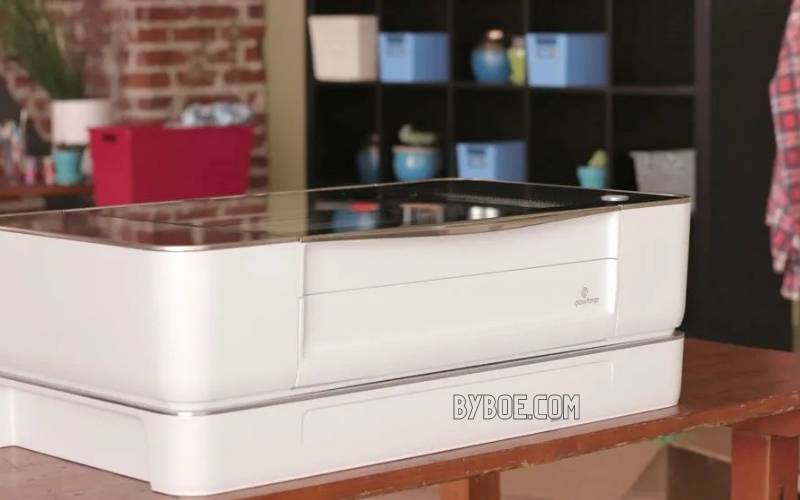
Flux Beamo Vs Glowforge: Conclusion
The conclusion on Flux Beamo versus Glowforge cutter is that they are both great machines. However, the Glowforge laser cutter is a bit more expensive, but it is worth the investment. Both of them have the same functionality and are equally good. The Glowforge is slightly more costly, but it’s more practical to use. We hope that our guide was helpful for you.

